Market
State of the Art Market: An Analysis of Global Auction Sales in the First Five Months of 2022
Here's what recent auction results can tell us about the state of play in the art market.

Here's what recent auction results can tell us about the state of play in the art market.

Artnet News and Morgan Stanley

How much top-flight art can the market absorb? That was the question hovering over the auction sector at the beginning of 2022, when Christie’s, Sotheby’s, and Phillips were preparing to offer more valuable art than the market had seen in years. The tension was only heightened by tumbling stock markets in the days before the kickoff of New York’s major spring auction season, which boasted more than $2.8 billion worth of art across the Big Three houses. On the heels of these landmark sales, Morgan Stanley collaborated with Artnet News and the Artnet Price Database to survey the state of the auction market for the first five months of each year beginning 2018 through 2022 as illustrated in all charts herein.
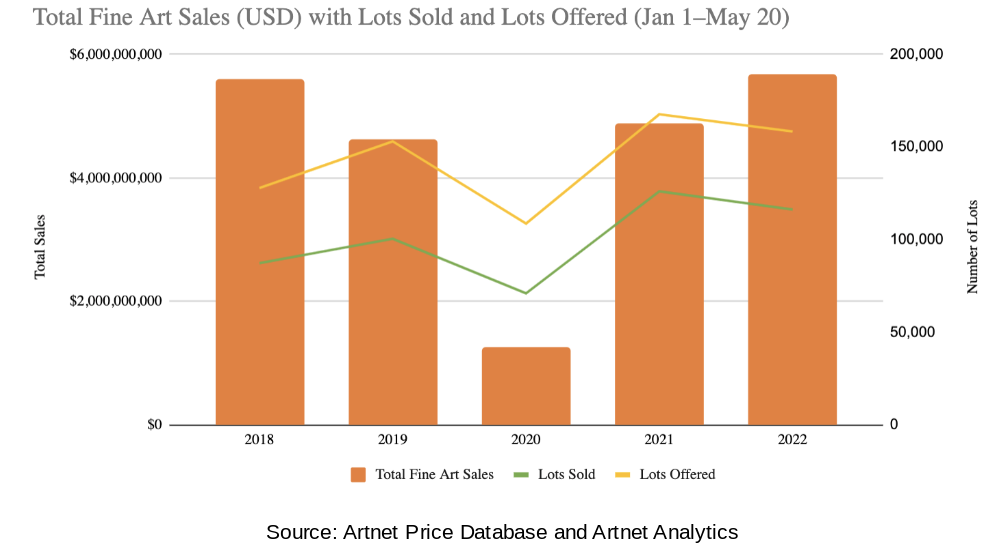
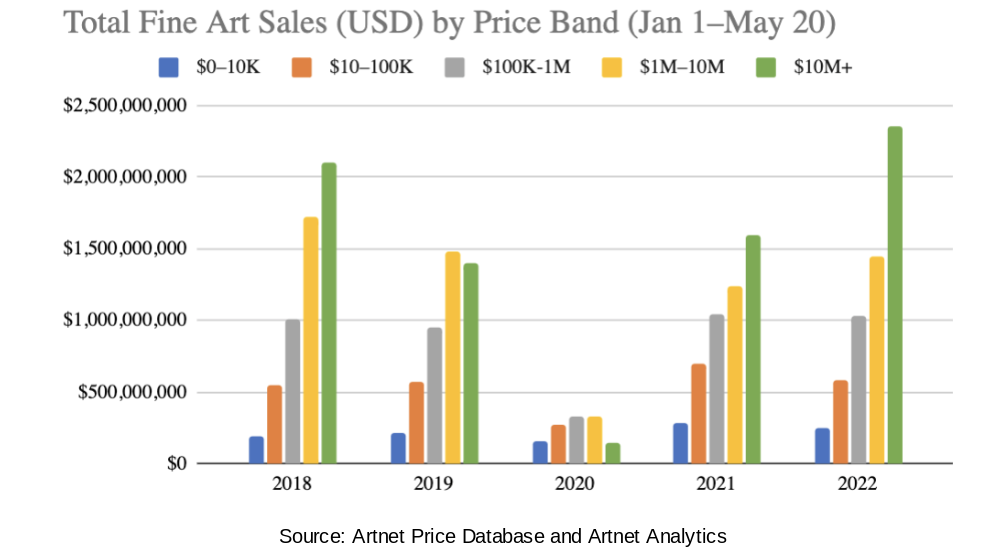

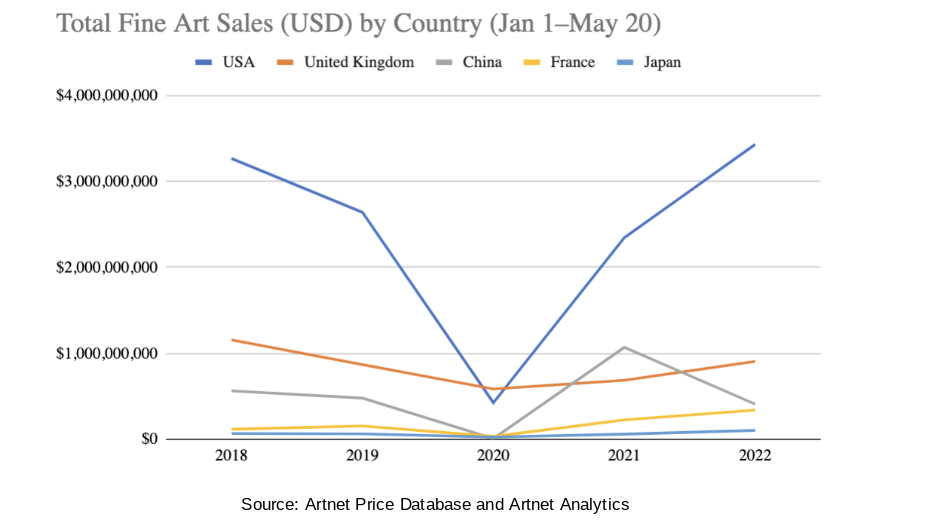
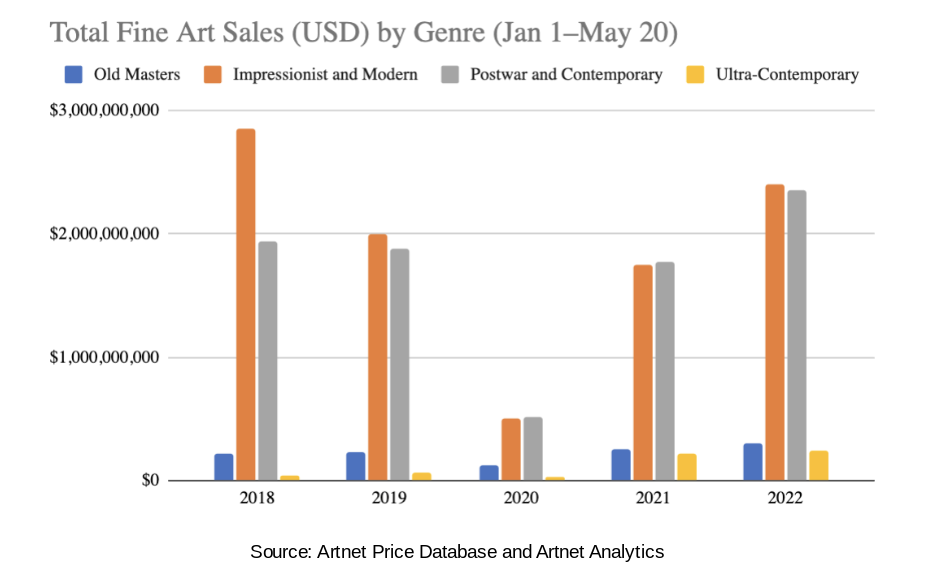
A Closer Look at Ultra-Contemporary Art at Auction
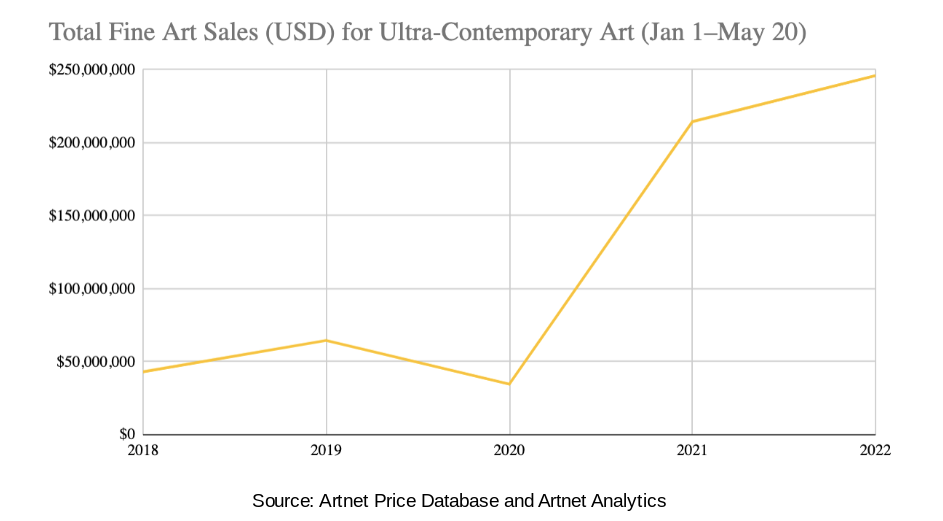
Artnet Price Database: From Michelangelo drawings to Warhol paintings, Le Corbusier chairs to Banksy prints, you will find over 14 million color-illustrated art auction records dating back to 1985. Artnet covers more than 1,800 auction houses and 385,000 artists, and every lot is vetted by Artnet’s team of multilingual specialists. Whether you are appraising a collection, researching an artist’s market history, or pricing an artwork for sale, the Price Database will help you determine the value of art.
Disclosures: This material was published on June 16, 2022 and has been prepared for informational purposes only. Charts and graphs were published by ArtNet News in the Artnet Intelligence Report Spring 2022. The information and data in the material has been obtained from sources outside of Morgan Stanley Smith Barney LLC (“Morgan Stanley”). Morgan Stanley makes no representations or guarantees as to the accuracy or completeness of the information or data from sources outside of Morgan Stanley.
This material is not investment advice, nor does it constitute a recommendation, offer or advice regarding the purchase and/or sale of any artwork. It has been prepared without regard to the individual financial circumstances and objectives of persons who receive it. It is not a recommendation to purchase or sell artwork nor is it to be used to value any artwork. Investors must independently evaluate particular artwork, artwork investments and strategies, and should seek the advice of an appropriate third-party advisor for assistance in that regard as Morgan Stanley Smith Barney LLC, its affiliates, employees and Morgan Stanley Financial Advisors and Private Wealth Advisors (“Morgan Stanley”) do not provide advice on artwork nor provide tax or legal advice. Tax laws are complex and subject to change. Investors should consult their tax advisor for matters involving taxation and tax planning and their attorney for matters involving trusts and estate planning, charitable giving, philanthropic planning and other legal matters. Morgan Stanley does not assist with buying or selling art in any way and merely provides information to investors interested learning more about the different types of art markets at a high level. Any investor interested in buying or selling art should consult with their own independent art advisor.
This material may contain forward-looking statements and there can be no guarantee that they will come to pass.
Past performance is not a guarantee or indicative of future results.
Because of their narrow focus, sector investments tend to be more volatile than investments that diversify across many sectors and companies. Diversification does not guarantee a profit or protect against loss in a declining financial market.
By providing links to third party websites or online publication(s) or article(s), Morgan Stanley Smith Barney LLC (“Morgan Stanley” or “we”) is not implying an affiliation, sponsorship, endorsement, approval, investigation, verification with the third parties or that any monitoring is being done by Morgan Stanley of any information contained within the articles or websites. Morgan Stanley is not responsible for the information contained on the third party websites or your use of or inability to use such site, nor do we guarantee their accuracy and completeness. The terms, conditions, and privacy policy of any third party website may be different from those applicable to your use of any Morgan Stanley website. The information and data provided by the third party websites or publications are as of the date when they were written and subject to change without notice.
This material may provide the addresses of, or contain hyperlinks to, websites. Except to the extent to which the material refers to website material of Morgan Stanley Wealth Management, the firm has not reviewed the linked site. Equally, except to the extent to which the material refers to website material of Morgan Stanley Wealth Management, the firm takes no responsibility for, and makes no representations or warranties whatsoever as to, the data and information contained therein. Such address or hyperlink (including addresses or hyperlinks to website material of Morgan Stanley Wealth Management) is provided solely for your convenience and information and the content of the linked site does not in any way form part of this document. Accessing such website or following such link through the material or the website of the firm shall be at your own risk and we shall have no liability arising out of, or in connection with, any such referenced website. Morgan Stanley Wealth Management is a business of Morgan Stanley Smith Barney LLC.
© 2022 Morgan Stanley Smith Barney LLC. Member SIPC. CRC 4785538 6/2022